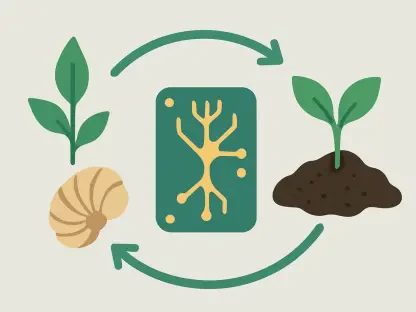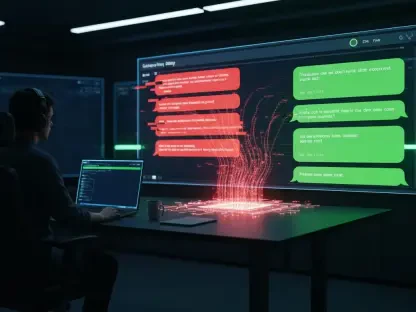In the rapidly shifting landscape of software development, the security flaws embedded in legacy programming languages like C have emerged as a critical threat to global digital infrastructure, with vulnerabilities dating back to the 1970s exposing vital systems to persistent cyberattacks. As operating systems, web browsers, and countless other foundational technologies rely on C, the urgency to address its inherent weaknesses has never been greater. Rust, a modern programming language celebrated for its robust safety features, offers a compelling alternative, capable of preventing many of the bugs and exploits that plague C. Yet, the monumental task of manually converting sprawling C codebases to Rust poses significant challenges, both in terms of time and potential errors. This dilemma has sparked innovative research, notably from Professor Sukyoung Ryu and her team at the Korea Advanced Institute of Science and Technology (KAIST), who have developed an automated C-to-Rust translation technology. Unlike AI-driven approaches that often prioritize speed over accuracy, their method champions precision through mathematical verification, raising the question of whether such a focused strategy can redefine standards in software security.
Unpacking the Risks of C and Rust’s Potential
The programming language C, a bedrock of critical software since its inception, remains integral to systems like operating systems and web browsers, yet its design lacks the safeguards needed to prevent severe bugs and security breaches in today’s threat landscape. These structural shortcomings have led to recurring exploits, undermining the reliability of essential digital infrastructure. Many of the most damaging cyberattacks in recent memory can trace their roots to vulnerabilities in C code, highlighting the dire need for a safer alternative. Despite its historical importance, the language’s inability to adapt to modern security demands has rendered it a liability, pushing developers and researchers to seek solutions that can mitigate risks without sacrificing performance. This persistent issue frames the broader conversation around transitioning away from legacy systems, as industries grapple with balancing innovation and stability in an era of escalating cyber risks.
Rust, introduced as a safer alternative, has gained traction for its ability to catch errors at compile time and enforce memory safety, features that directly address many of C’s most glaring weaknesses. This capability makes Rust particularly well-suited for high-stakes applications where reliability is non-negotiable. However, the sheer volume of existing C code in use worldwide presents a formidable barrier to adoption, as manually rewriting these codebases is not only labor-intensive but also prone to human error. The scale of this challenge has driven the development of automated tools to facilitate the transition, with the goal of preserving functionality while eliminating vulnerabilities. Rust’s promise lies not just in its technical advantages, but in its potential to reshape how software is built and maintained, offering a glimpse into a future where security is embedded by default rather than retrofitted as an afterthought.
Global Momentum for Safer Software Practices
A growing consensus among industry leaders and governmental bodies underscores the critical need to move beyond C, reflecting a shared recognition that software security must be prioritized in response to mounting cyber threats. In early 2024, a significant U.S. White House report advocated for phasing out C due to its persistent vulnerabilities, signaling a policy-level shift toward safer programming paradigms. Simultaneously, the Defense Advanced Research Projects Agency (DARPA) has positioned Rust as the leading alternative, investing in initiatives to automate the conversion process from C to Rust. Such institutional endorsements highlight a broader movement within the tech ecosystem, where the escalating sophistication of cyberattacks demands proactive measures. This alignment of policy and technology goals creates a fertile ground for groundbreaking solutions to take root, amplifying the relevance of academic contributions in this space.
This global push is not merely a reaction to past failures but a forward-looking strategy to fortify digital infrastructure against future risks, with Rust emerging as a cornerstone of this vision. The backing from influential entities provides both funding and validation for research efforts aimed at streamlining the adoption of secure languages. Beyond governmental support, major tech companies are increasingly integrating Rust into their development pipelines, recognizing its value in preventing costly security breaches. This collective momentum underscores a pivotal shift in priorities, where the focus is no longer solely on functionality or speed but on building systems that can withstand adversarial challenges. As this trend gains traction, it sets the stage for innovations that can bridge the gap between legacy code and modern safety standards, ensuring that critical software evolves in step with emerging threats.
KAIST’s Breakthrough in Translation Accuracy
At the forefront of the effort to modernize software security, the KAIST research team, led by Professor Sukyoung Ryu, has pioneered a C-to-Rust translation technology that diverges sharply from the AI-driven methods dominating the field. While large language models (LLMs) often power code translation tools with impressive speed, their lack of guaranteed accuracy poses significant risks, especially in critical applications where precision is paramount. KAIST’s approach, grounded in programming language theory, offers a mathematically verifiable method to ensure that the translated Rust code behaves identically to the original C code, eliminating the introduction of new errors. This focus on correctness, as noted by team member Dr. Jaemin Hong, addresses a fundamental flaw in AI-based systems, providing a level of reliability that is essential for maintaining trust in automated tools deployed in high-stakes environments.
The implications of KAIST’s methodology extend beyond mere technical achievement, as it challenges the prevailing reliance on probabilistic models in software engineering by championing deterministic outcomes. By prioritizing rigorous proof over approximation, the team has crafted a solution that instills confidence among developers tasked with safeguarding critical systems. This precision is particularly vital when dealing with legacy C code that underpins much of the world’s infrastructure, where even minor discrepancies in translation could lead to cascading failures. Furthermore, the approach serves as a counterpoint to the hype surrounding AI, reminding the industry that speed must not come at the expense of safety. As cyber threats continue to evolve, KAIST’s technology offers a blueprint for how automation can be harnessed responsibly, ensuring that the transition to secure languages like Rust is both seamless and dependable.
Innovations in Handling Complex Code Structures
Delving into the specifics of KAIST’s contributions reveals a meticulous effort to address the nuanced challenges of C-to-Rust conversion, with targeted solutions for some of the most intricate programming constructs. The team has developed advancements such as Mutex conversion to manage program synchronization, Output Parameter conversion for effective result delivery, and Union conversion to handle diverse data storage needs, with these innovations showcased at prominent conferences like ICSE in 2023, PLDI in 2024, and ASE in 2024. Each of these breakthroughs tackles a distinct aspect of C’s complexity, ensuring that even the most convoluted code can be accurately transformed into Rust without losing functionality. This systematic approach demonstrates a deep understanding of both languages, positioning the research as a cornerstone for broader adoption in real-world applications where reliability cannot be compromised.
Beyond individual achievements, the cumulative impact of these technical strides lies in their ability to facilitate large-scale transitions from C to Rust, addressing a critical bottleneck in modernizing legacy systems. The attention to detail in handling specific constructs reflects a commitment to comprehensive solutions rather than superficial fixes, setting a high bar for what automated translation tools should achieve. This level of granularity is essential when dealing with software that powers everything from financial systems to national defense, where errors are not just costly but potentially catastrophic. By solving these complex challenges, KAIST’s work not only proves the feasibility of automated conversion but also builds a foundation for future innovations, encouraging other researchers and developers to explore similar rigorous methods. The result is a pathway toward widespread implementation of Rust that prioritizes both security and operational integrity.
Redefining Standards for a Secure Digital Future
KAIST’s research marks a pivotal shift in software engineering, steering the industry away from the unpredictability of AI-driven tools toward methods rooted in theoretical precision that promise greater reliability. While large language models have captivated attention with their rapid processing capabilities, their inability to ensure correctness renders them unsuitable for applications where failure is not an option. The emphasis on mathematical verification in KAIST’s C-to-Rust translation technology offers a compelling alternative, establishing a new benchmark for how automation should be applied in security-critical contexts. This trend reflects a growing realization that sustainable progress in software development requires balancing innovation with accountability, ensuring that tools are not just efficient but also trustworthy in their outcomes.
Looking ahead, the broader implications of this work resonate across multiple stakeholders, from developers seeking to modernize legacy code to policymakers advocating for robust cybersecurity frameworks. The alignment with global initiatives, such as those supported by DARPA and governmental recommendations, amplifies the potential impact of KAIST’s contributions, integrating academic rigor with practical needs. This synergy suggests a future where secure programming languages like Rust become the norm rather than the exception, fundamentally altering how software is designed and maintained. As the digital landscape continues to face sophisticated threats, the industry stands to benefit from embracing approaches that prioritize verifiable safety, ensuring that the foundation of critical systems is both resilient and adaptable. KAIST’s pioneering efforts thus serve as a catalyst for reimagining software security with precision at its core.









